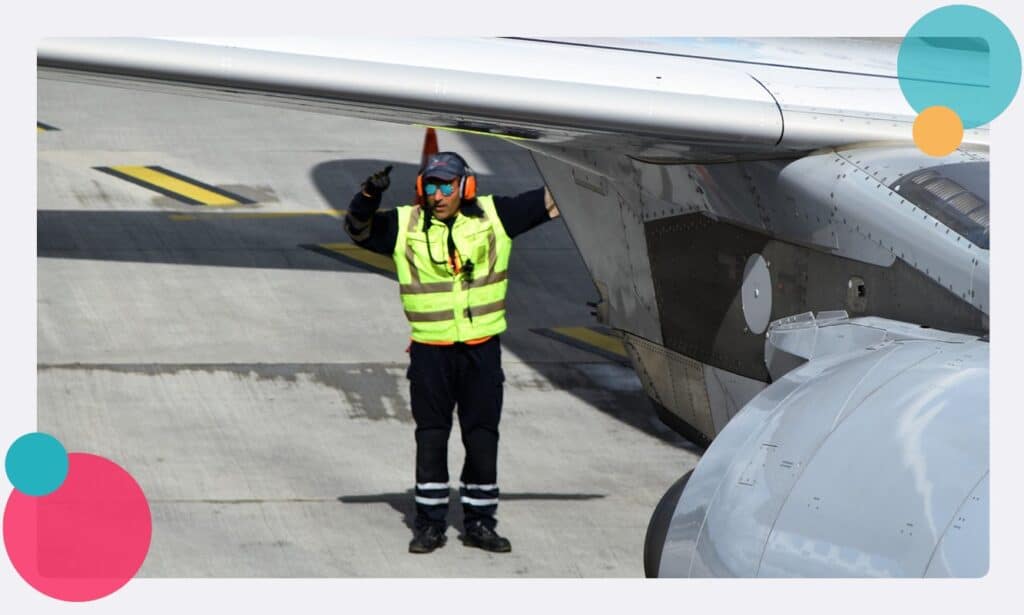
What are the risks of working in the industry? How are those risks changing? How does lone working affect safety? –These are some of the questions we aim to answer in this article.
The UK aviation sector employs nearly a million employees, contributes £52 billion to UK GDP (3.4% of total GDP) and provides £26 billion in exports.
Appropriately for an industry based on traversing long distances, jobs in the aviation industry are distributed far and wide. Indeed, before the pandemic, over a quarter of all constituencies in Great Britain had more than 1,000 people employed in aviation jobs.
So, what sort of roles are there in the sector? Well, without even considering the many related jobs that are helped by the aviation industry (such as many tourism roles), some examples include:
While a small number of roles (pilots and flight attendants) actually involve being in the air, you can see how many diverse roles it takes to keep the air transport industry running (or flying).
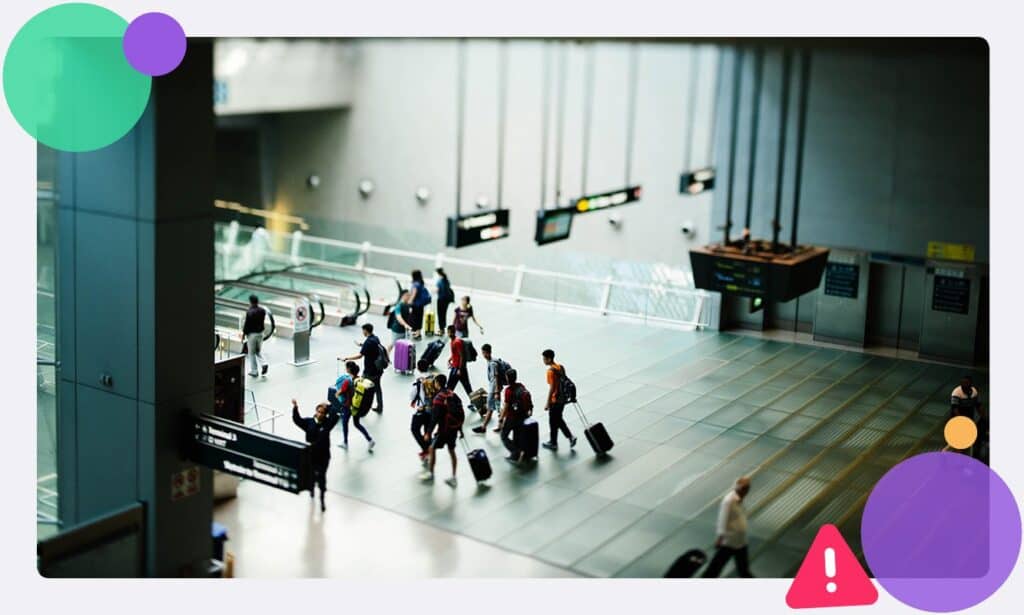
Before thinking about the risk of lone working, it’s important to put it in context with some of the wider health and safety risks.
So how safe is the aviation sector for workers? Well, while fear of flying may affect a third of all Americans and a quarter of all Brits, air travel is often seen as incredibly safe for passengers due to its high level of regulation.
For those employed in the aviation industry, the numbers are not so clear. Risk levels vary wildly between job roles, and there are some factors that seem to be changing the nature of risk in the sector.
Fatigue and exhaustion can be a problem among many aviation workers.
In fact, since the emergence of Covid-19 and 2022’s cost of living crisis, it has been reported that many aviation workers have been working 60 hour weeks, with some “being expected to work between 80 and 90 hours a week”.
More worrying still are reports of airline workers (including cabin crew) being required to work beyond legal ‘flight time limitations’.
Fatigue can be a dangerous risk in any industry, but is especially concerning in an industry with such low margins for error.
Three quarters of aviation workers have been physically or verbally abused at work, according to a recent poll.
The airline industry has always had to deal with some level of anger from customers, but recent travel problems and staffing issues have led to a vast increase –putting workers’ physical and mental wellbeing in jeopardy.
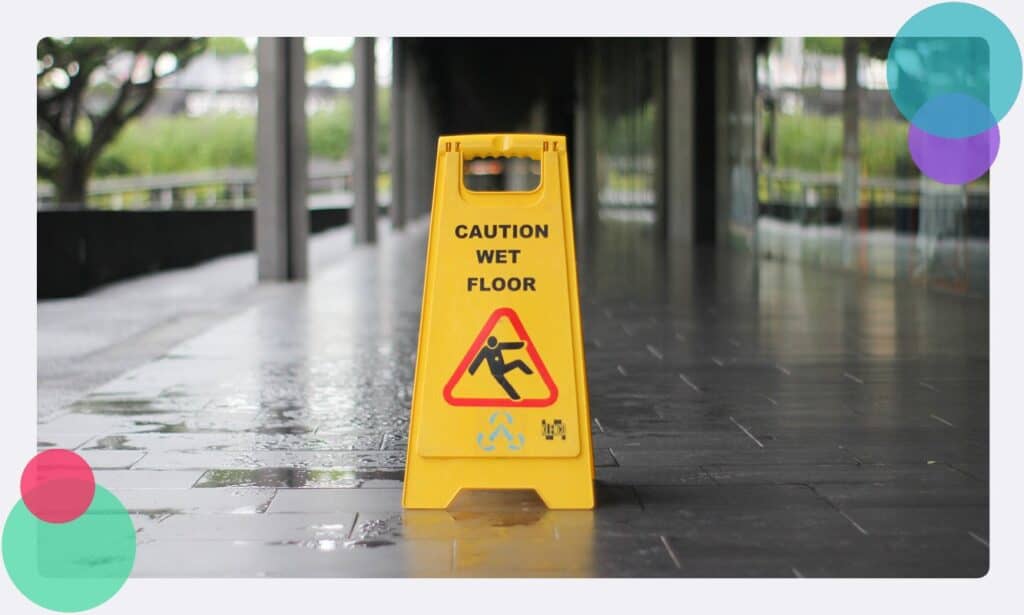
As well as the wider factors of health and safety mentioned above, it is important that the ‘air transport’ sector (as the Health and Safety Executive calls it) knows which types of injury are most common. We’ll go into some of these injuries below.
Note: in this section we are only focusing on ‘serious’ injuries, which are injuries that render a worker unable to perform their jobs as normal for more than seven days.
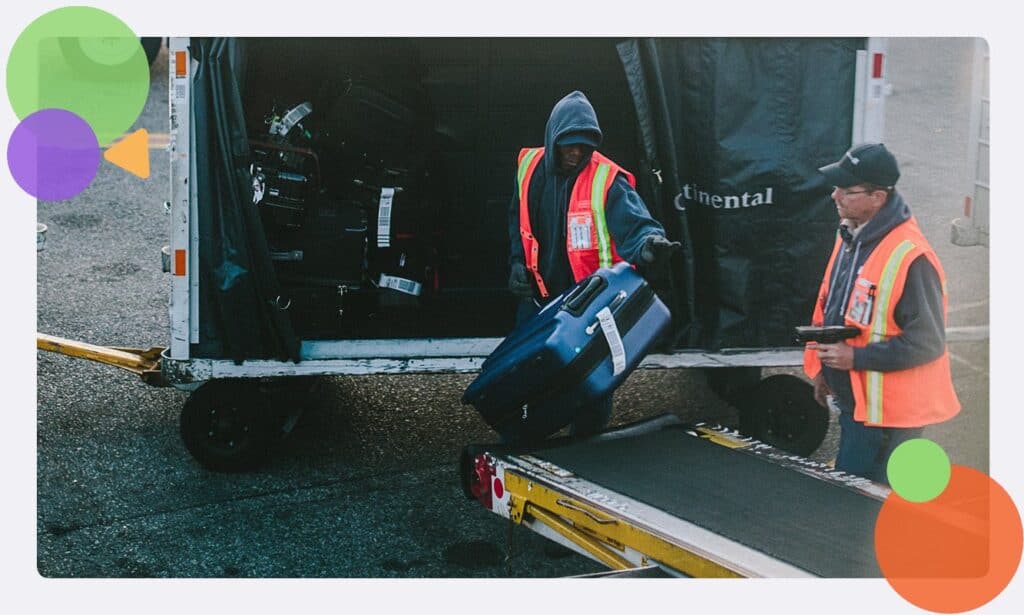
Manual handling (lifting and moving objects) is one of the most common causes of in-work injury in the UK –amounting to one third of cases.
Despite this prominence, baggage handlers are five times more likely to suffer a manual handling injury than the average worker.
And, while baggage handlers are the most likely to suffer from manual handling injuries, it is common across the sector.
Indeed, manual handling accounts for 39% of all serious injuries in this sector (and this number could be as high as 55%!)
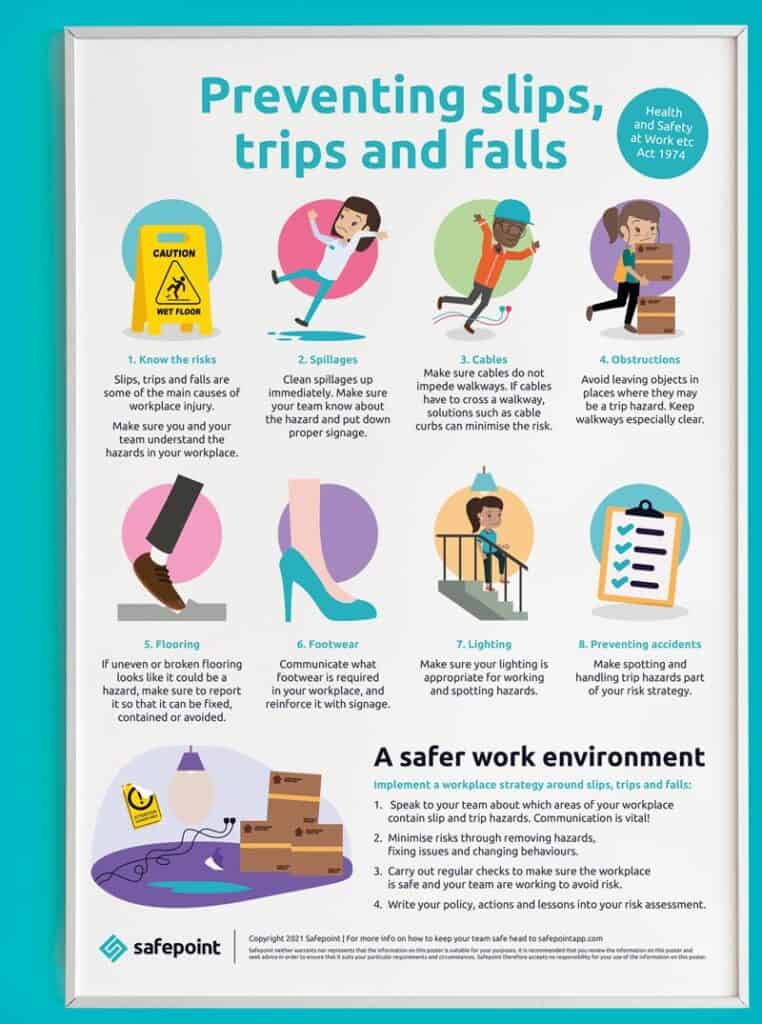
‘Slips, trips and falls’ are the most common causes of injury across all industries. For the air transport industry, however, it is the number two cause. It accounts for 24% of all reported injuries.
The causes and frequency of slips, trips and falls, again, largely depend on the role. For instance, those who work outside on the ground may have more risk from wet and icy surface conditions. For those that work with cargo or luggage, however, tripping over objects may be a particular concern.
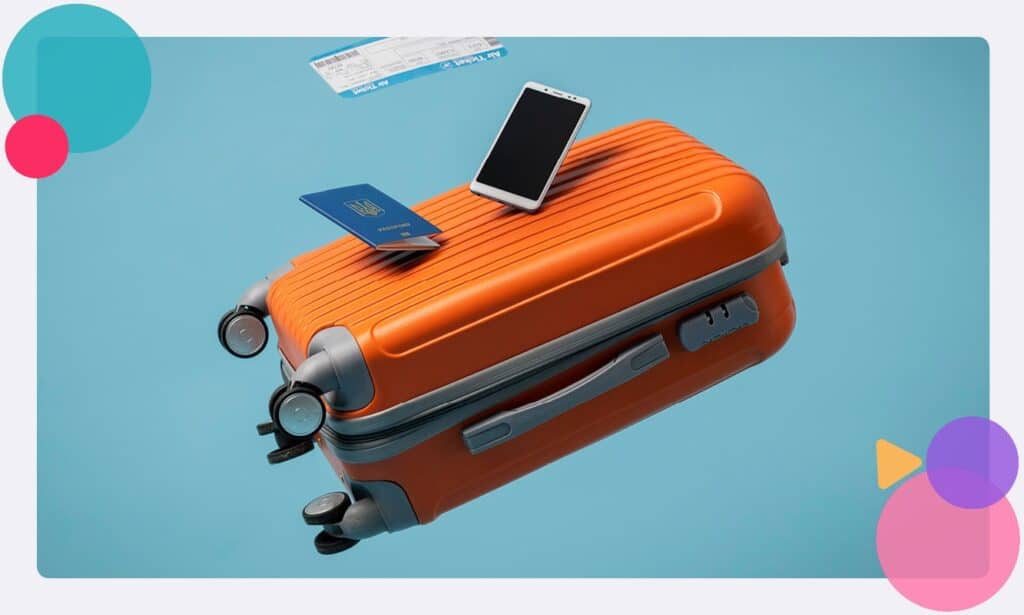
Being struck by an object accounts for 13% of serious injuries in the air transport sector. This represents a slightly larger percent of reportable injuries than the all-industry standard.
Like manual handling, people doing manual work are most likely to be injured by being struck by an object. This could be flight or ground crew being hit by cargo or luggage, or engineering teams being hit by tools or equipment.
The remainder of injuries are made up of being ‘struck against’ (6%), ‘Fall from height’ (5%), injury from a ‘moving vehicle’ (5%), and ‘other’ which makes up the final 8%.
While these injuries make up a much smaller percent of the total, it’s important to consider how they might affect some roles more than others. When considering your own team’s health and safety, it might be that heights or vehicles are a much larger risk factor than the industry average.
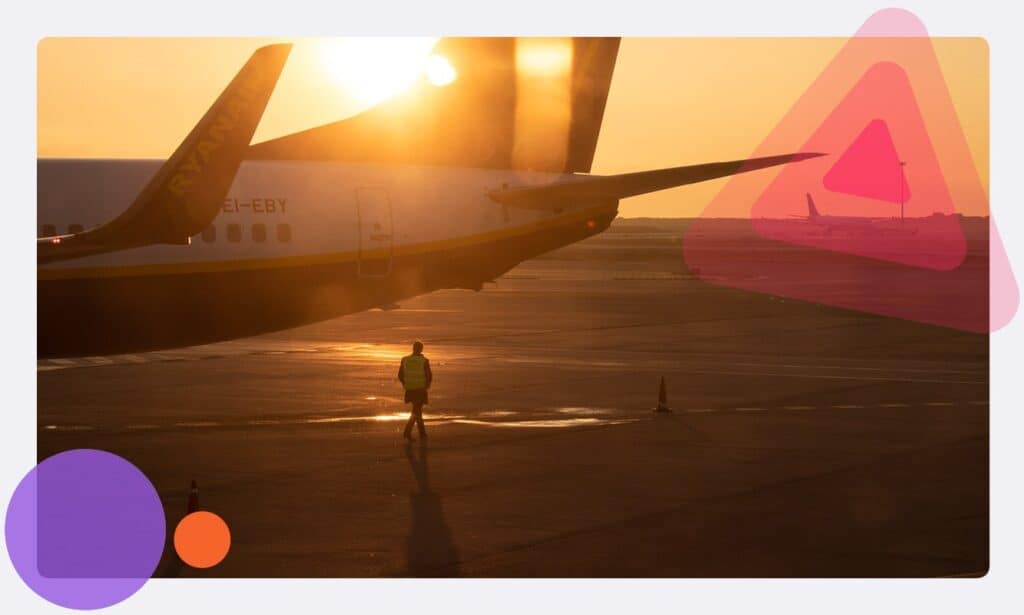
Considering all the potential risks listed in the sections above, it is no surprise that aviation and air transport can feel like a hazardous industry to work in.
Unfortunately, all these risks can be made worse by working alone.
Lone working is, perhaps, best defined by the NHS. They describe it as “any situation or location in which someone works without a colleague nearby; or when someone is working out of sight or earshot of another colleague.”
The reason why lone working is a risk factor is because it makes supervision and mutual support difficult. When someone works alone, accidents can become more likely and, if someone is injured, response times can be slower.
This doesn’t mean that lone working should never happen –working alone is a common and necessary part of many types of working environments– but it should be done with ample consideration and risk assessment.
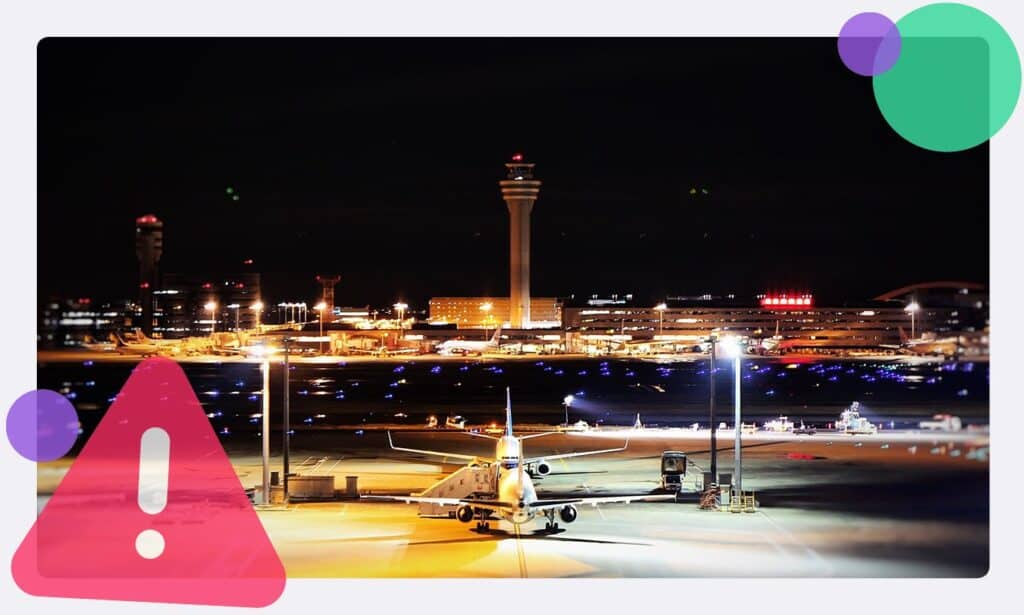
There are many risk factors one should consider when looking at lone working in the air transport sector:
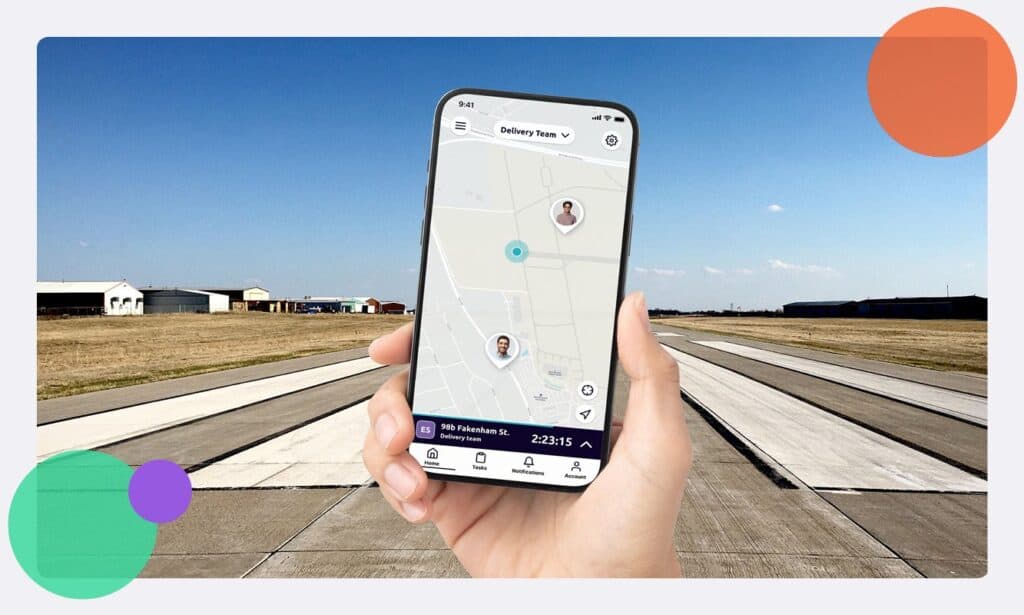
Whether it is a baggage handler on a runway, an agent on a desk, or an engineer in a hangar, the sheer scale of work in the air transport sector can make lone working unavoidable.
For general advice on how to keep lone workers safe, we encourage you to download our free guide to lone working. In the meantime, we will list some of the key ways to keep your staff safe when they’re working alone.
As an employer, you should already have a comprehensive and up to date risk assessment (if you don’t, you can make one here!), but it is important to build lone working into your risk assessment strategy.
One of the best ways to start with risk assessing your lone working is to talk to your staff. Learn from your team where and when they work alone, and what you can do to mitigate the risks involved.
We would always advise organisations to avoid lone working wherever possible. Working in pairs or teams can be a simple way of achieving this. For some jobs (such as working in confined spaces) working alone may never be appropriate.
Knowing who is working on what, and for how long, can help you spot dangerous incidents sooner. If someone doesn’t report in on time, that should be a red flag. Consider a calendar, job planning system, or a task monitoring app
As part of UK law on lone working, employers are required to supply their staff with reliable ways to call for help in an emergency. Good places to start are phones or walkie talkies.
Regular phones and walkie talkies, however, can only provide partial protection. Imagine a technician tripping and knocking themselves out while working alone in a hanger, or a service agent being harassed in a quiet area of a building. In these cases, the staff member would need alternative ways to call for help.
In the next section we’ll explain how lone worker solutions can help keep track of your staff and provide a way for lone workers to automatically and discreetly call for help.
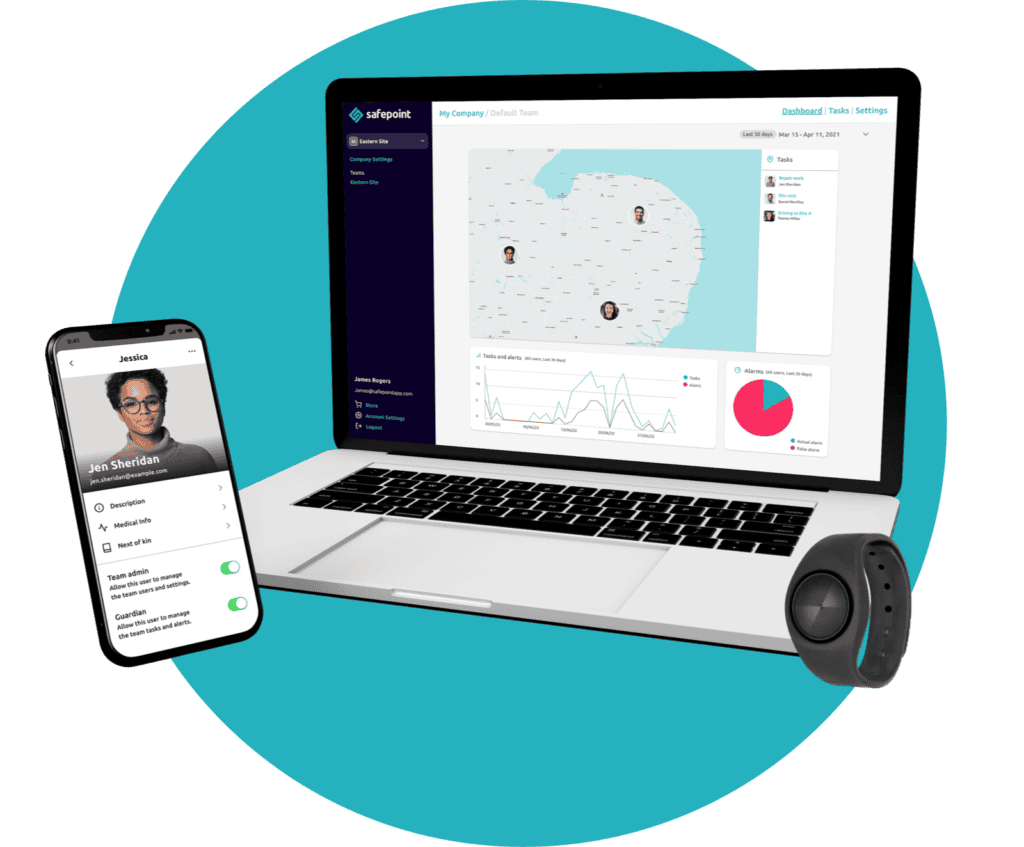
There are many ways to improve the safety of your aviation and air transport team when they’re working alone, or in a high risk role.
In this section, we’re going to focus on how Safepoint’s all in one lone worker solution can help your team stay safe, organised and supervised, simply and without a big investment in new tech.
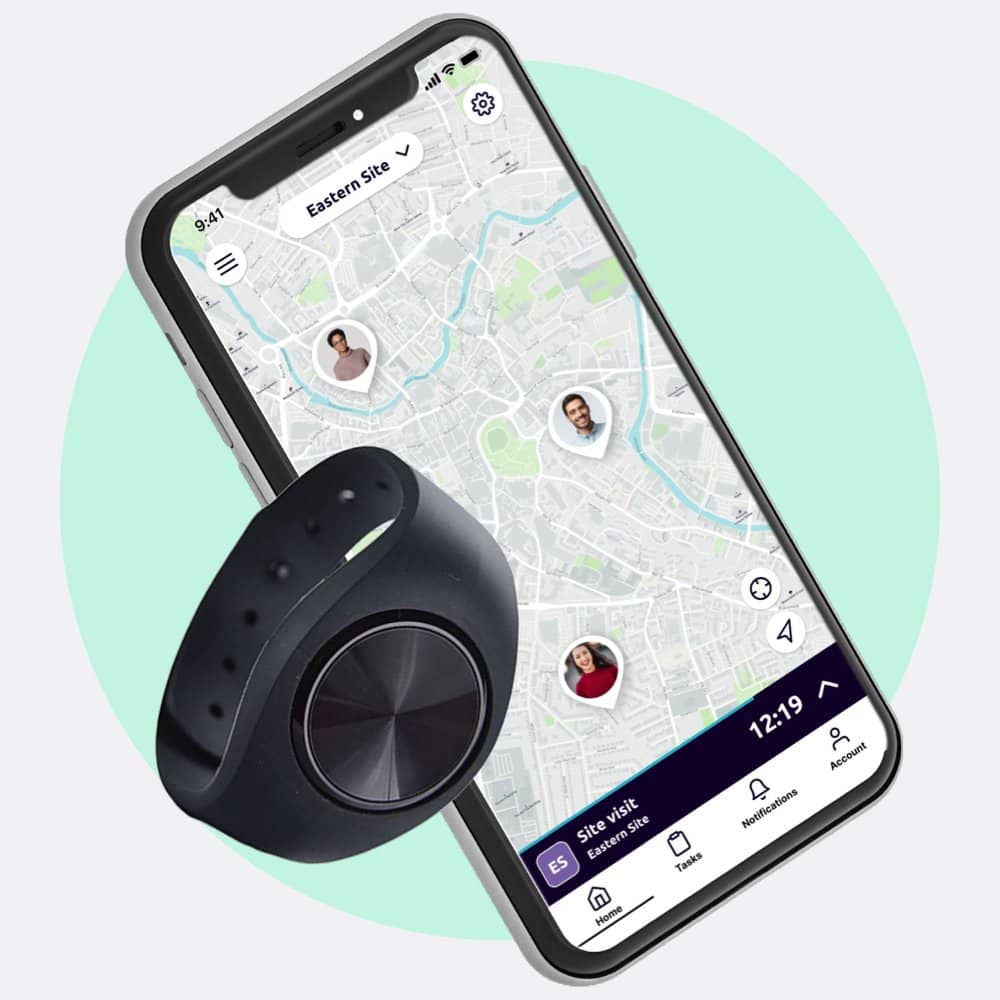
Supply your lone workers with the Safepoint app and wearable panic alarms.
If your staff take a fall or fail to check in as safe, a smart alarm with live GPS updates will be sent to your chosen supervisors.
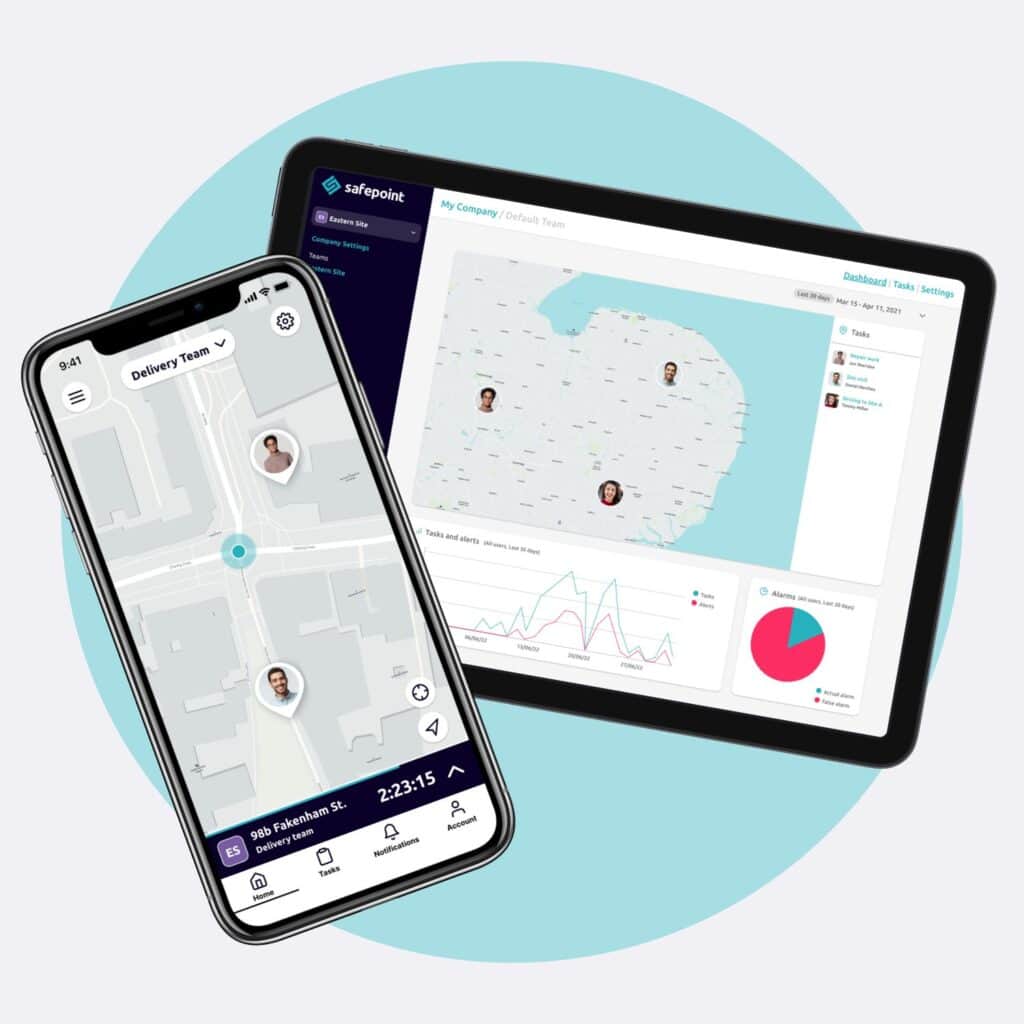
Safepoint is the first lone worker solution to bring its all in one team management features into the app.
Keep track of your team’s safety, job status and live location, wherever you are!

Never miss an emergency with Safepoint’s dedicated lone worker monitoring service.
Our professional team of BS8484 accredited Guardians will handle any alert, 24/7 from their Alarm Receiving Centre.
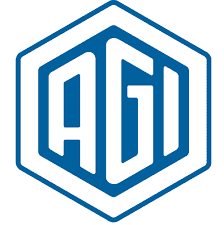


We protect lone workers and at risk staff in a wide range of industries, including the aviation and air transport industries!
Award-winning safety management tools and a fully accredited response team.